걈주 (Kyŏngju)
걈주 (Kyŏngju or Gyeongju), is a city with 265 thousand residents in 2010,1 located in the southeast corner of Northern Kyŏngsang Province of 대한 (Daehan or South Korea). The city center is inland, but its bounds reach the sea.2 The city bounds include several ranges of mountains, all associated with the Taebaek system.
In early days it was called 斯盧 (Saro) and headed a city state within the the Jinhan Confederacy, absorbing its neighbors in the fourth century CE. In 503 it became known as 徐羅伐 (Sŏrabŏl or Seorabeol) and was capital of Silla until that kingdom was absorbed in 935. In 940 it was renamed 慶州 (Kyŏngju) and remained regionally important until 1601.
UNESCO honors the cultural heritage of the city with two site designations: Gyeongju Historic Areas and 'Seokguram Grotto and Bulguksa Temple.' The former includes sculptures, reliefs, pagodas and the remains of temples and palaces, mostly from the seventh to the tenth centuries. There are three 'belts': the Mount Namsan Belt; the Wolsong Belt, which includes a ruined palace, the Kyerim Woodland and the Ch'omsongdae Observatory; and the Tumuli Park Belt, with its royal graves.3 The Bulguksa Temple is also a tourist site.4
| Year | Population | Political entity |
| 361 CE | 5| Saro city state6 | |
| 500 CE | 7| Saro state | |
| 622 CE | 8| Silla | |
| 800 CE | 9| Silla | |
| 900 CE | 10| Silla | |
| 1000 CE | 60,00011 | tributary to Great Liáo (Liao Empire) |
| 2010 CE | 265,0001 | 대한 (Daehan or South Korea) |
External references
Monumental Buddha in Seokguram Grotto, Kyŏngju, Northern Kyŏngsang Province, Daehan
Historical maps
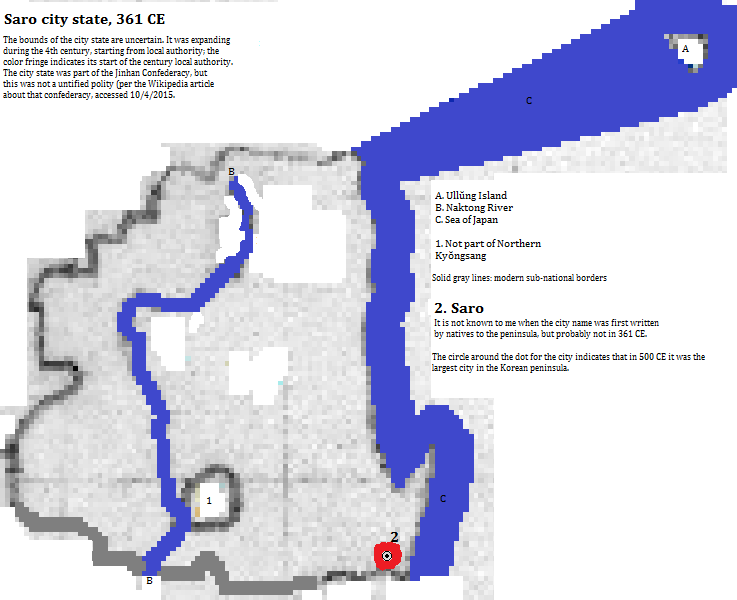
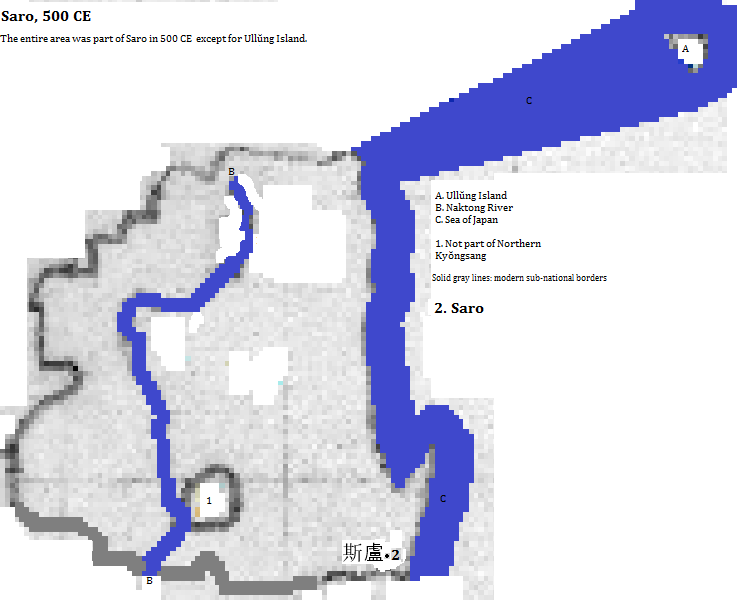
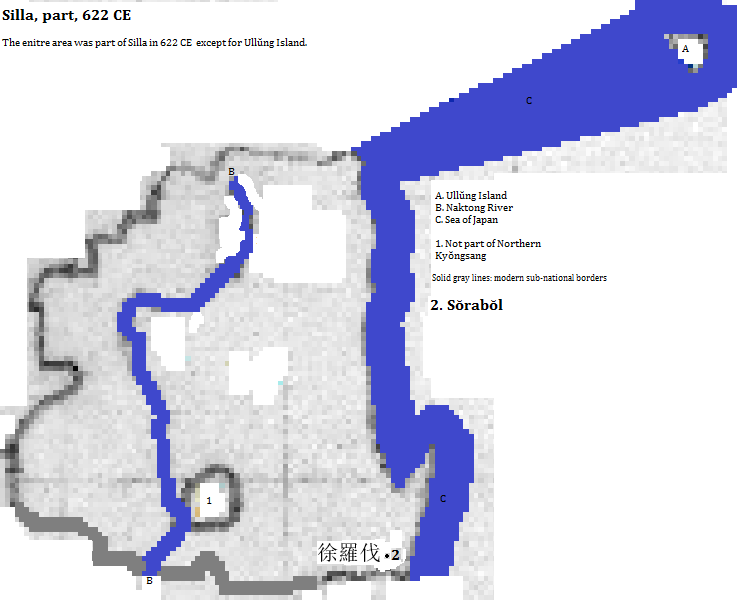
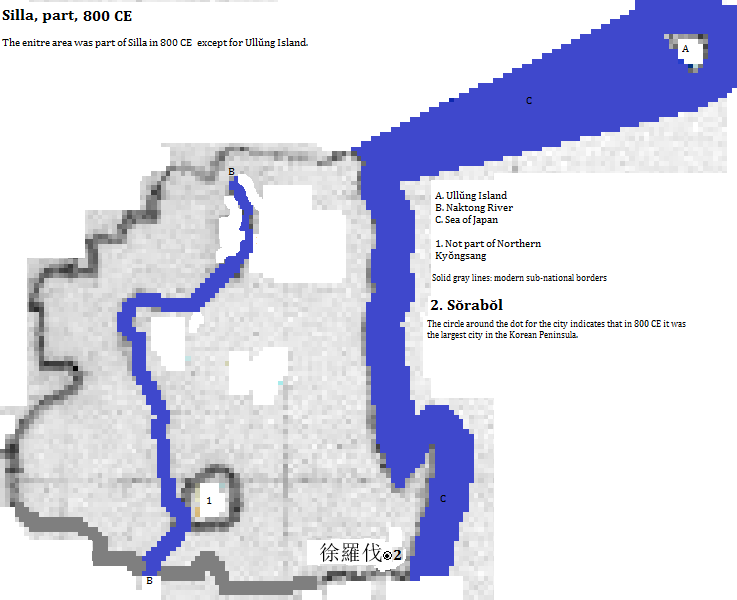
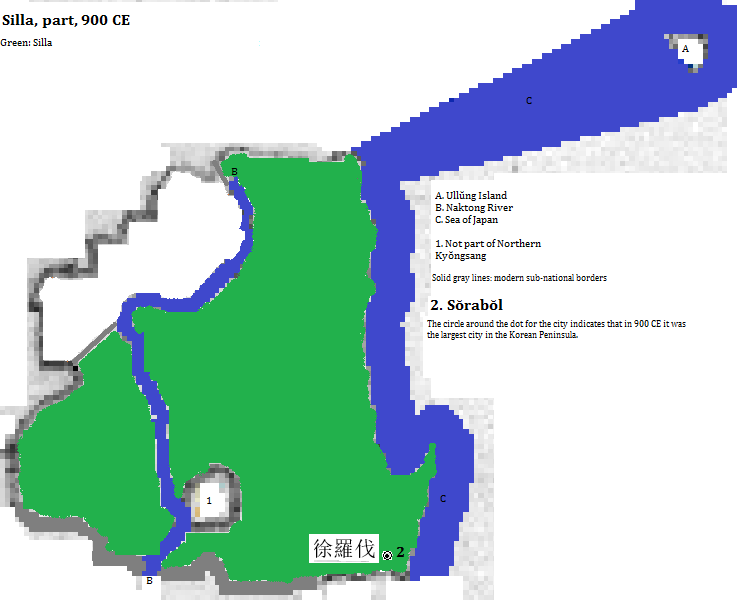
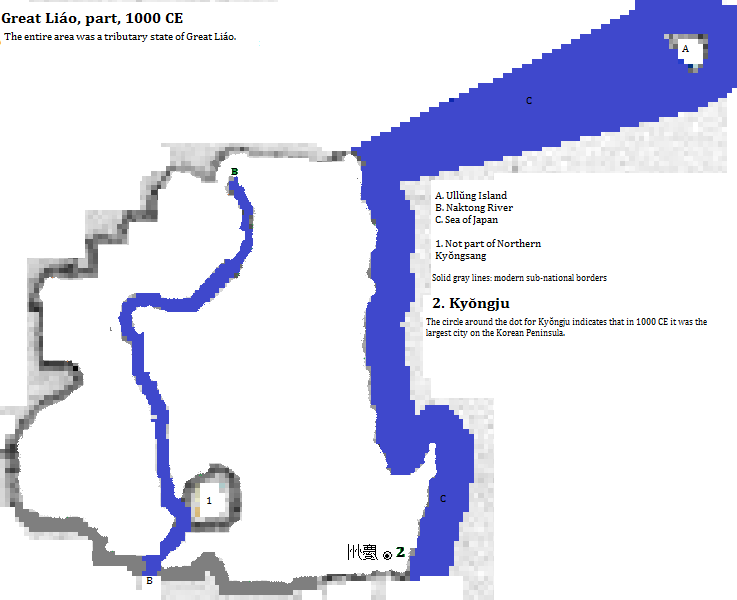
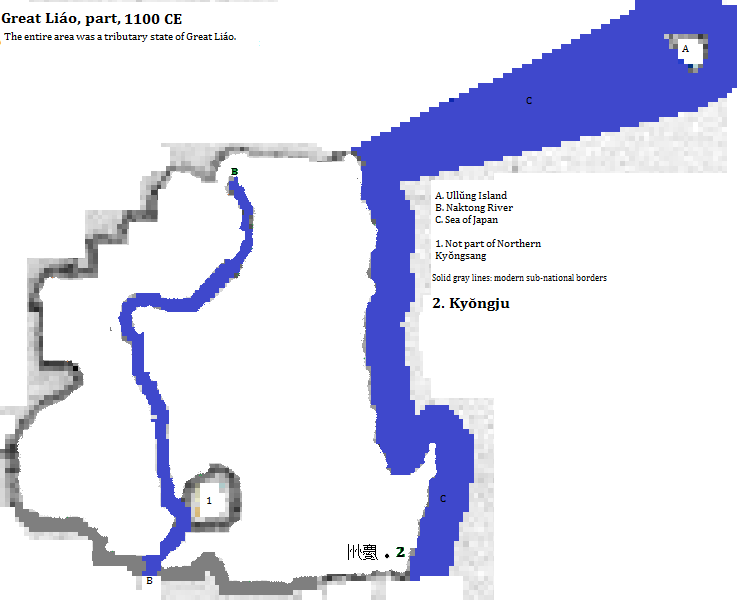
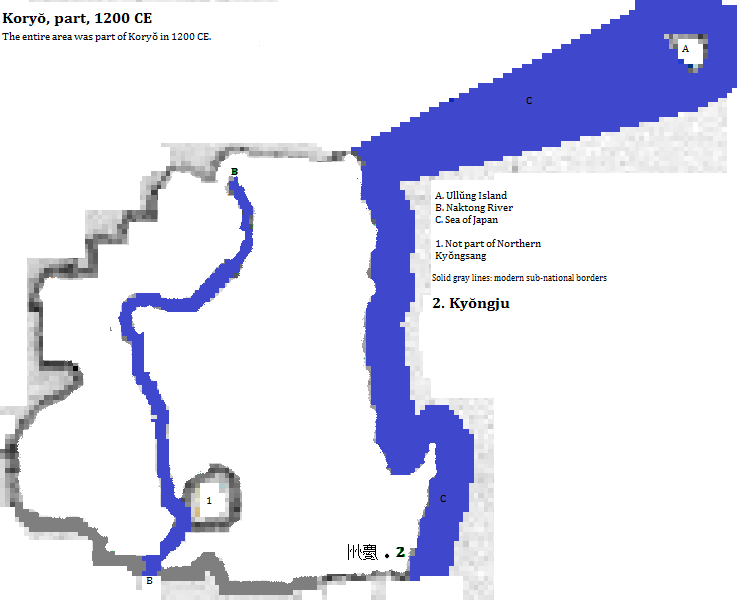
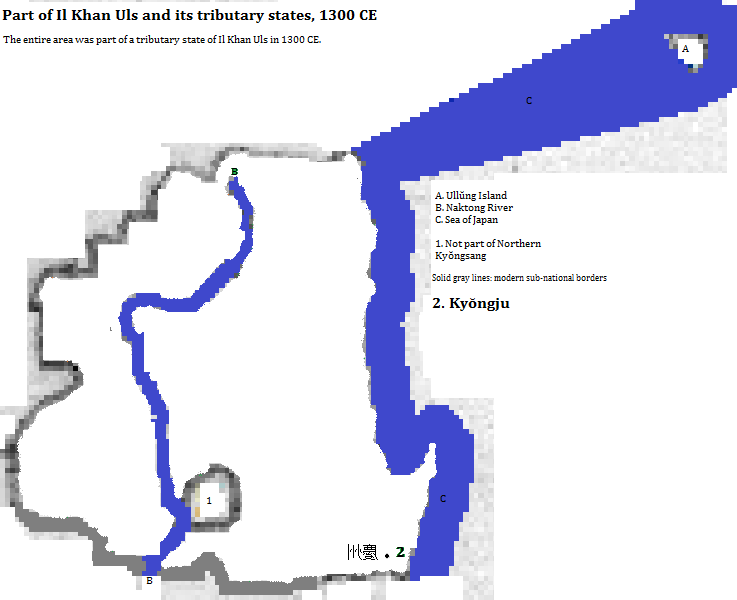

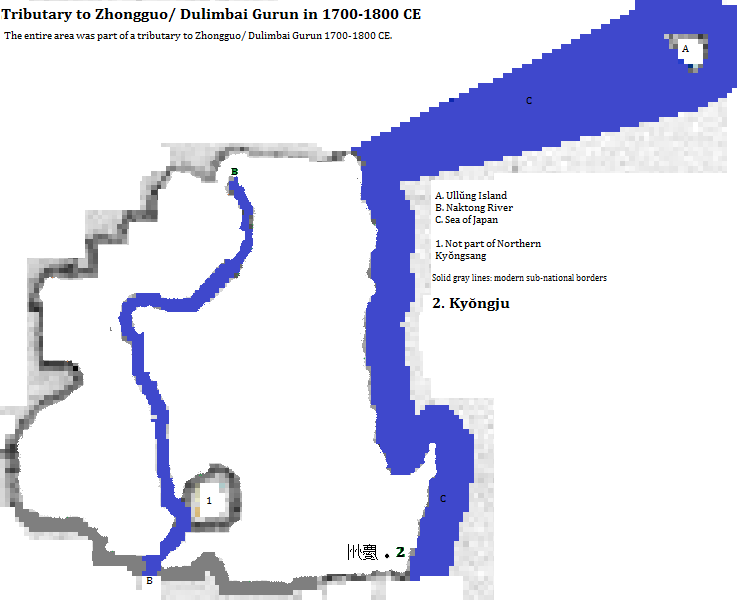
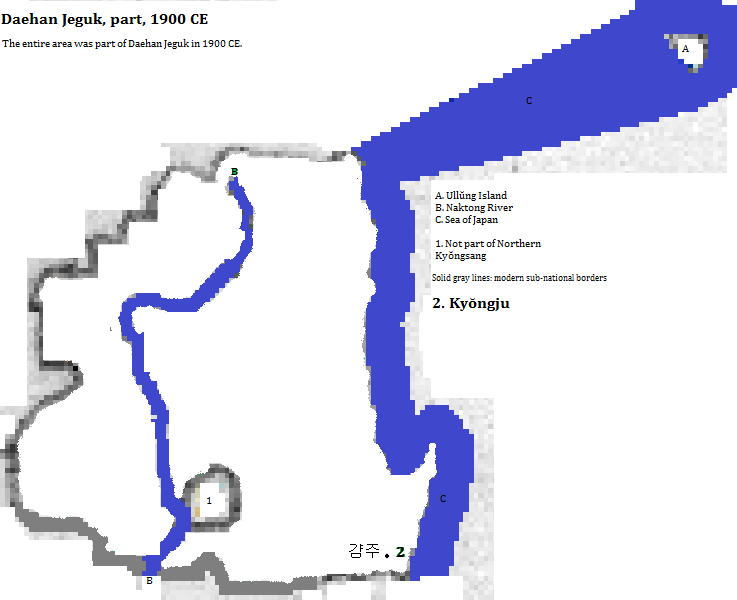
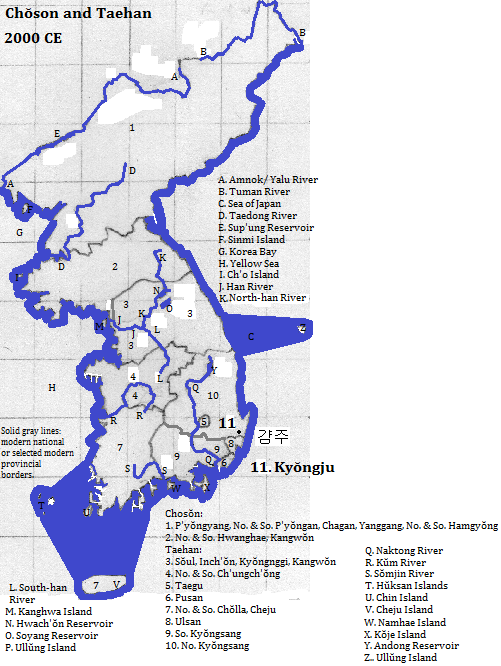
Footnotes
1. https://en.wikipedia.org/wiki/List_of_cities_in_South_Korea, accessed 10/13/2015.
2. Dongcheon District is where the city hall is and is located inland. See the map and statement in https://en.wikipedia.org/wiki/Subdivisions_of_Gyeongju, accessed 10/13/2015.
3. UNESCO, World Heritage Sites (Firefly Books, 2010).
4. http://theplacesmusttravel.blogspot.com/2011/04/10-most-popular-tourist-attractions-in.html, accessed 8/31/2015.
5. Its population in 361 CE was smaller than Thessalonica (42 thousand) and larger than دمشق (Dimashq, 40 thousand), Estimate in Tables of the World's Largest Cities, in Tertius Chandler, Four Thousand Years of Urban Growth, 2nd ed. (The Edwin Mellen Press, 1987). It was the largest city in the Korean peninsula in 361 CE.
6. The city state was within the Jinhan Confederacy, but that group was not sufficiently unified to consitute a polity.
7. Chandler, op. cit. In 500 CE دمشق (Dimashq), with 50 thousand, was larger than Yangchow, which was larger than Merv, which was larger than 斯盧 (Saro), which was larger than Kavery, which was largeer than Ungjin, which was larger than Indrapura, which was larger than Tikal, which was larger than Bakhalal, which was larger than Coptos, which was larger than Tatung, which was larger than Varanasi, which was larger than Balkh, which was larger than Ye, which was larger than Srinagar, which was larger than Stakhr, which had 40 thousand.
8. Ibid. Hangzhou had 60 thousand and was bigger than 徐羅伐 (Sŏrabŏl or Seorabeol), which was bigger than Asuka, which was bigger than Bezwada, which had 50 thousand residents.
9. Ibid. Kaifeng had 55 thousand and was bigger than Nanjing, which was bigger than 徐羅伐 (Sŏrabŏl or Seorabeol), which was bigger than Caesarea, which was bigger than Kanchi, which was bigger than Roma, which had 50 thousand residents.
10. Ibid. Madurai had 50 thousand and was bigger than Kashgar, which was bigger than 徐羅伐 (Sŏrabŏl or Seorabeol), which was bigger than Guangzhou, which was bigger than Lhasa, which was bigger than Tarsus, which had 48 thousand residents.
11. Ibid..













